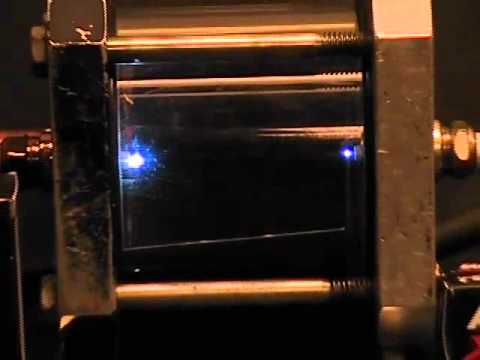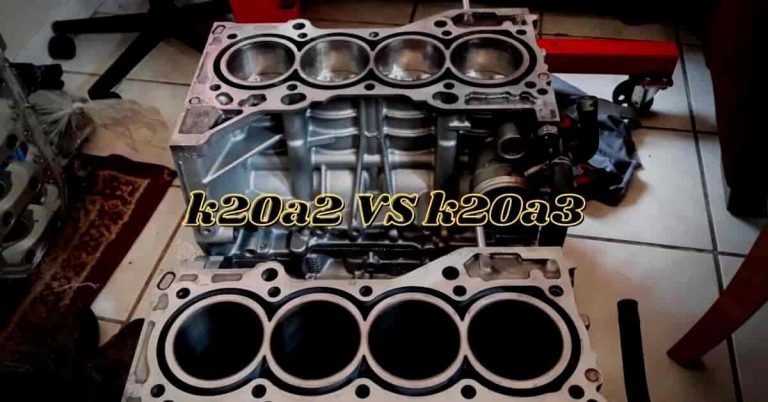There are many engine options for the Honda Civic, and two of the most popular choices are the B18B1 and B20B. Both engines offer great performance and fuel economy, but there are some key differences that may make one a better choice for your needs.
The B18B1 is a 1.8-liter engine that produces 140 horsepower and 119 lb-ft of torque. It’s a very reliable engine option that is often used in racing applications. The B20B, on the other hand, is a 2.0-liter engine that produces 155 horsepower and 144 lb-ft of torque. It’s a great choice for those who need more power and doesn’t mind sacrificing some fuel economy.
There are many differences between the B18B1 and B20B engines. The B18B1 is a 1.8-liter engine that was used in the 1996-2000 Honda Civic Si. The B20B is a 2.0-liter engine that was used in the 1997-2001 Honda CR-V.
Both engines are inline 4-cylinder engines, but the B20B has an extra 20% displacement over the B18B1. This difference in displacement gives the B20B more torque than the B18B1, which results in better acceleration. However, the smaller size of the B18B1 makes it rev more quickly, which can result in better fuel economy and higher top speeds.
integra B18 vs integra B20
How Much Hp Does B20B Have?
B20B is a high-performance engine produced by Honda. It has a power output of 200 horsepower at 7600 rpm. The torque output is 160 lb-ft at 5500 rpm.
This engine was used in the Honda Prelude from 1997 to 2001. It is also used in the Honda Accord from 1998 to 2002.
What Engine is a B20B?
A B20B engine is a 2.0 liter DOHC 16 valve inline 4 cylinder engine produced by Honda. It was first used in the 1996-2001 CR-V and also saw use in the 1999-2000 Odyssey.

Credit: dustrunnersauto.com
B20 Horsepower
B20 Horsepower: How Much More Power Does It Really Make? When it comes to car engines, there are a lot of different variables that can affect performance. One of the most important is the octane rating of the fuel being used.
The higher the octane, the more potential energy is available to be released during combustion. That’s why many people choose to use high-octane race gas in their street cars—it can provide a significant power boost. But what if you’re using a lower-octane fuel like pump gas?
Can you still get some extra power by upping the ante with biodiesel? Biodiesel is an alternative fuel made from renewable resources like vegetable oils and animal fats. It usually has a much higher octane rating than pump gas, and many people believe it can provide a noticeable power increase in diesel engines.
There have been quite a few studies on this topic, and the results are somewhat mixed. Some show that using biodiesel can indeed increase horsepower, while others show no difference at all. So, what’s the verdict?
Is there anything to be gained by using biodiesel in your car or truck? If you’re looking for a definitive answer, you’re not going to find one. But if you want our opinion, we think it’s definitely worth trying out—especially if you’ve got access to cheap or free biodiesel!
B20 Vtec
B20 Vtec is a performance engine option for the Honda Civic. It was first introduced in 1997 and was available in the US until 2000. The B20 Vtec engine is a 2.0L four-cylinder that produces 200 hp and 140 lb-ft of torque.
It features VTEC technology, which allows for increased power and efficiency. The B20 Vtec engine can be found in the Honda Civic Si and Type R models.
B18B Horsepower
The B18B engine is a 1.8-liter inline four-cylinder engine produced by Honda. It was introduced in the 1990s as a performance option for the Honda Civic. The engine is notable for its high power output and fuel efficiency.
The B18B engine produces 100 horsepower at 6000 rpm and 106 lb-ft of torque at 5200 rpm. This gives the engine a specific output of 55 hp per liter, making it one of the most powerful engines in its class. The engine also features Honda’s Variable Valve Timing and Lift Electronic Control (VTEC) system, which further enhances performance.
Despite its high power output, the B18B engine is also very fuel efficient. In fact, it has been rated by the EPA as one of the most fuel-efficient engines in its class, with an estimated fuel economy of 30 mpg city/39 mpg highway*. This makes it an excellent choice for those looking for both performance and efficiency.
If you’re looking for a powerful and fuel-efficient engine for your Honda Civic, then consider opting for the B18B. You won’t be disappointed!
B20Z2 Specs
The B20Z2 is a 2.0-liter inline four-cylinder gasoline engine from Honda. It was introduced in 1996 as the powerplant for the sixth-generation Civic Si and was also used in the 1997-2001 Prelude Type SH and BB6 chassis Code SI models. The engine features VTEC variable valve timing on both intake and exhaust cams, with solid bucket followers for reduced maintenance costs.
Output is rated at 160 horsepower (120 kW) at 7600 rpm and 132 lb-ft (178 N⋅m) of torque at 6300 rpm when using 98 RON unleaded gasoline. With 95 RON fuel, the output is slightly detuned to 155 hp (116 kW) at 7600 rpm and 128 lb-ft (174 N⋅m). Both figures are SAE net ratings In Japan, power output was increased to 167 hp (125 kW).
When installed in the US/Canadian market Honda Accord CM4 platform cars, power output remained unchanged but the torque was slightly increased due to different tuning; this resulted in a more low-end grunt feeling.[1] Applications:
1996–2000 Honda Civic Si EM2/ES1/EP3 1997–2001 Honda Prelude BB6/SH
B18A1 Horsepower
B18A1 Horsepower B18A1 horsepower is a term used to describe the power output of an engine. The B18A1 is a 1.8-liter inline four-cylinder engine that was produced by Honda from 1990 to 2001.
It was used in a variety of Honda and Acura vehicles, including the Prelude, Accord, and CR-V. This engine is notable for its high power output and fuel efficiency. The B18A1 produces 140 horsepower at 6000 rpm and 128 lb-ft of torque at 5200 rpm.
This allows it to accelerate from 0 to 60 mph in 7.7 seconds and achieve a top speed of 137 mph. The engine also has a high redline of 7000 rpm. In terms of fuel economy, the B18A1 gets 26 mpg in the city and 34 mpg on the highway when equipped with a manual transmission.
Despite its age, the B18A1 remains popular among tuners and racers due to its high potential for power upgrades. A wide variety of aftermarket parts are available for this engine, including performance camshafts, intake manifolds, exhaust systems, and turbochargers. With some modifications, it is possible to increase the horsepower output to over 400 hp.
B20Z Engine
The B20Z engine is a 2.0L inline four-cylinder engine that was used in the Honda CR-V from 1997 to 2001. It was also used in the Honda Odyssey and Honda Accord from 1998 to 2002. The B20Z has a cast iron block and aluminum head with DOHC and 4 valves per cylinder.
It produces 140 hp (104 kW) at 6000 rpm and 160 lb·ft (217 N·m) at 4000 rpm.
The B20Z engine was replaced by the K24A engine in the Honda CR-V in 2002 and by the J35A engine in the Honda Accord in 2003.
B18C3
The B18C3 is a 1.8-liter four-cylinder engine from the Honda B-series of engines. It was launched in 1996 as part of the sixth-generation Civic range and was replaced by the revised B18C4 engine in 2000. The engine is notable for its high power output and revvy nature – it produces 140PS at 7600rpm and 132 lb-ft (178Nm) at 6000rpm.
It also features Honda’s Variable Valve Timing and Lift Electronic Control (VTEC) system on both the intake and exhaust camshafts, which helps to improve performance across the rev range. Despite its high power output, the B18C3 is a relatively compact engine thanks to its DOHC layout and use of lightweight aluminum components. This makes it a popular choice for tuners looking to extract even more power from it.
Common modifications include upgrading the turbocharger or supercharger, fitting bigger injectors, porting and polishing the cylinder head, and adding an aftermarket exhaust system. These can all help to increase power output significantly, with some tuned examples producing over 400PS!
B18C1 Compression Ratio
The B18C1 engine features a compression ratio of 11.0:1. This high compression ratio, combined with the engine’s high rev limit of 8200 rpm, allows the B18C1 to produce power comparable to much larger displacement engines. The increased compression also results in a more efficient combustion process, which improves fuel economy and reduces emissions.
Conclusion
In general, the B18B1 is a better engine than the B20B. The main reason for this is that the B18B1 has been significantly updated over the years, while the B20B has not. As a result, the B18B1 is more powerful and efficient than the B20B.
In addition, the B18B1 is also less likely to experience engine problems.




